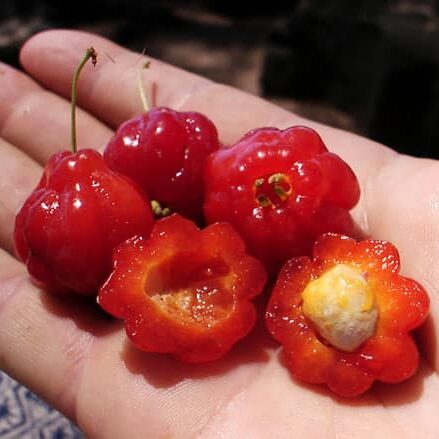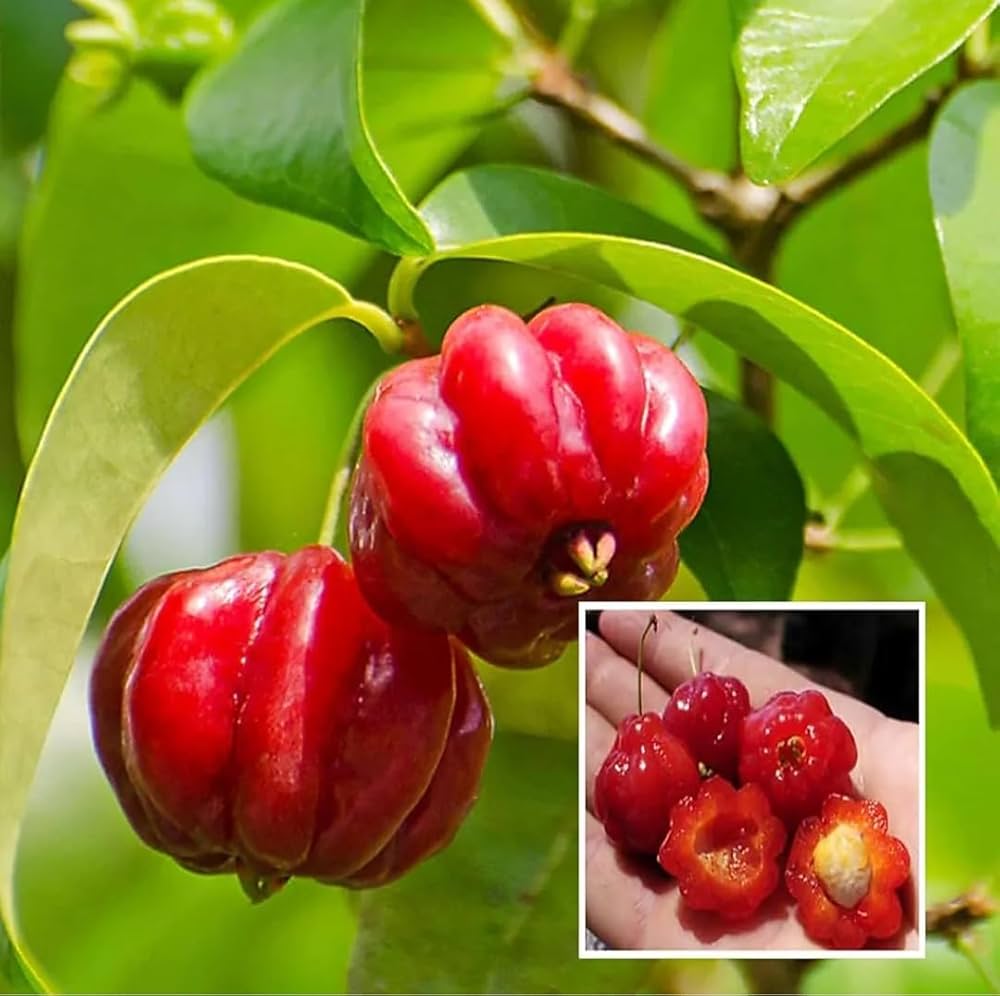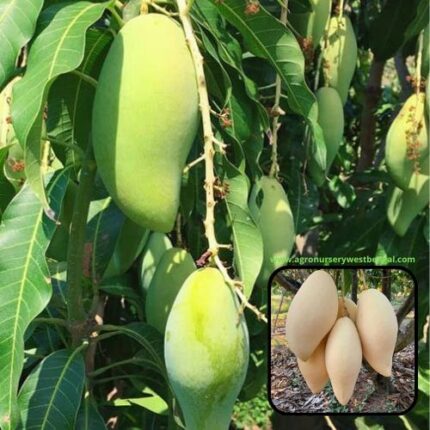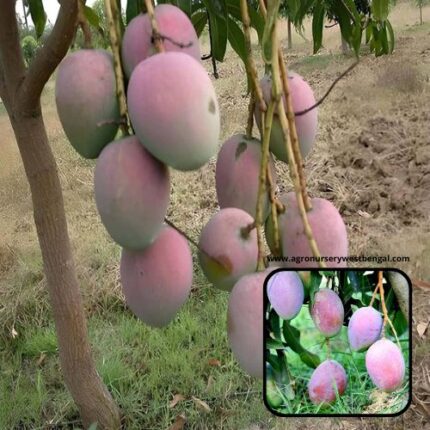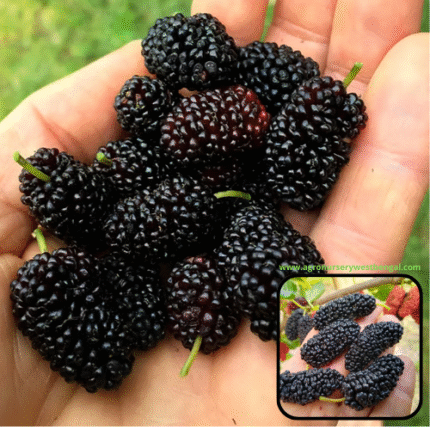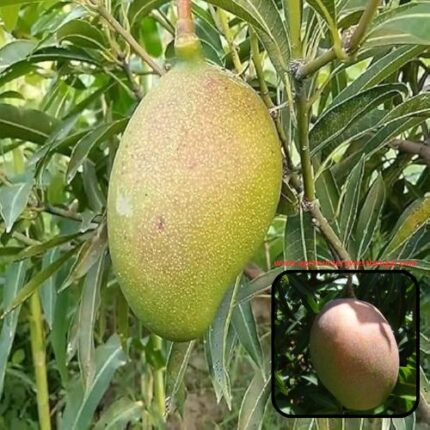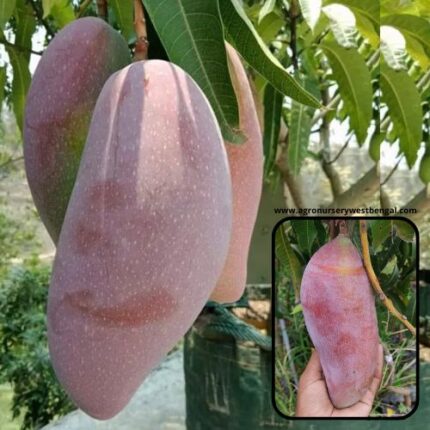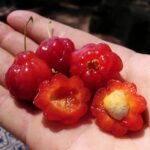

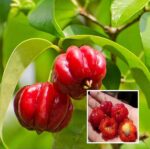
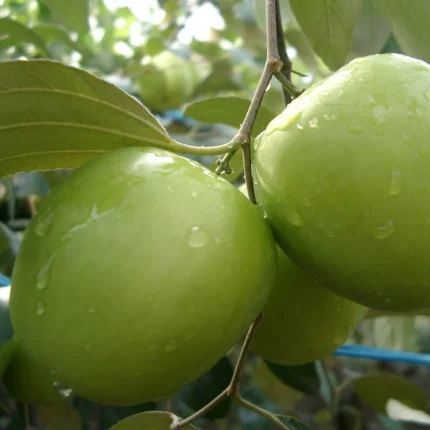
Green apple ber fruit plants
₹599 Original price was: ₹599.₹349Current price is: ₹349.
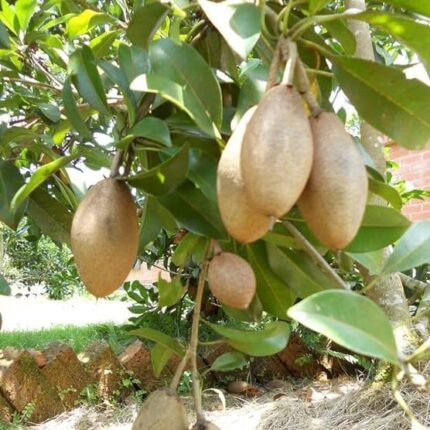
Long Chiku fruit plants
₹799 Original price was: ₹799.₹499Current price is: ₹499.
Red surinam Cherry fruit plants
₹899 Original price was: ₹899.₹549Current price is: ₹549.
Category: Fruit Plants
Description
The Red Surinam Cherry (Eugenia uniflora), also commonly known as Pitanga, Brazilian Cherry, or Cayenne Cherry, is a fascinating and often polarizing tropical fruit. While it shares the “cherry” name, it’s not botanically a true cherry but rather a member of the Myrtaceae family, which also includes guava and clove.
Here’s a detailed description of the Red Surinam Cherry:
The Fruit:
- Appearance: This is its most distinctive feature. The fruit is small, typically 2-4 cm (0.8-1.5 inches) in diameter, and has a unique, deeply ribbed, pumpkin-like shape with 7-8 prominent vertical ridges. It starts green and ripens through shades of orange, bright red, and finally a deep crimson or purplish-red. The skin is thin, smooth, and glossy.
- Color at Ripeness: The “Red” in its name emphasizes the most common ripe color. It’s crucial to consume the fruit when it’s fully ripe (deep red to almost black) as underripe fruits are notoriously tart, astringent, and can have a resinous or slightly “piney” aftertaste.
- Taste and Texture: When fully ripe, the taste is a complex blend of sweet, tart, and mildly acidic, often with subtle earthy or even slightly spicy undertones. Some describe it as a mix of cherry, apricot, and pineapple. The flesh is juicy, soft, and aqueous.
- Seeds: Each fruit typically contains 1 to 3 relatively flat, inedible seeds that should be discarded.
The Plant (Eugenia uniflora):
- Growth Habit: The Red Surinam Cherry is an evergreen shrub or small tree, generally growing 3-8 meters (10-26 feet) tall, though it can reach up to 15 meters in ideal conditions. It often develops a dense, bushy, and spreading habit, making it popular for hedges or screens.
- Leaves: The leaves are simple, elliptical to lance-shaped, glossy, and dark green. When young, they often exhibit beautiful bronze, copper, or reddish hues before maturing to a deep green. They are aromatic when crushed, with a somewhat resinous scent.
- Flowers: Small, star-shaped, white to pale cream flowers appear in clusters, often with a prominent cluster of white stamens. They are mildly fragrant.
- Thorns: The plant is generally considered thornless or with very small, inconspicuous thorns.
- Hardiness: It thrives in tropical and subtropical climates and is relatively hardy. It can tolerate a range of soil types as long as they are well-drained. It prefers full sun but can grow in partial shade. Once established, it shows good drought tolerance.
- Fruiting Season: In tropical regions, it can fruit almost year-round, with peak seasons varying by location. In many areas, it produces multiple crops throughout the year.
Uses and Benefits:
- Culinary:
- Fresh Eating: Best eaten fresh when fully ripe and chilled, as this helps to reduce any resinous flavor.
- Processed Products: Its tartness makes it excellent for jams, jellies, preserves, sauces, squashes, syrups, and wine. It can also be used in pies, tarts, and other desserts.
- Flavoring: Used as a flavoring in beverages and cocktails.
- Nutritional Value: Rich in Vitamin C (a significant portion of the daily recommended value), Vitamin A (beta-carotene), and various antioxidants like anthocyanins and flavonoids. It also contains minerals like calcium, phosphorus, iron, and potassium.
- Health Benefits:
- Immunity Booster: High Vitamin C content strengthens the immune system.
- Antioxidant Powerhouse: Helps combat oxidative stress, protecting cells from damage and potentially reducing the risk of chronic diseases.
- Digestive Health: Dietary fiber aids digestion and prevents constipation.
- Skin and Eye Health: Vitamins A and C contribute to healthy skin (collagen production, UV protection) and vision.
- Anti-inflammatory Properties: Antioxidants can help reduce inflammation.
- Potential Antimicrobial Properties: Studies suggest extracts may have activity against certain bacteria and fungi.
- Cardiovascular Health: Potassium helps regulate blood pressure, and antioxidants support overall heart health.
- Ornamental Value: Due to its attractive glossy foliage, colorful new leaves, fragrant flowers, and vibrant fruit, it’s widely used as an ornamental plant for hedges, screens, or specimen planting in gardens.
- Other Uses: In some traditional practices, leaves are used for medicinal purposes (e.g., teas for various ailments) or as an insect repellent.
While the Red Surinam Cherry offers many benefits, its unique flavor profile means it’s often an “acquired taste” for those unfamiliar with it. However, for those who appreciate its distinct sweet-tartness, it’s a delightful and highly nutritious tropical fruit.

